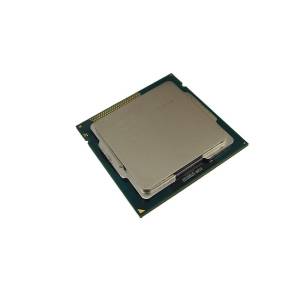Description
Powering Your World: A Deep Dive into CPUs
Central Processing Units (CPUs) are the brains of your computer, tablet, smartphone, or any other digital device. They execute instructions, process data, and manage all the functions of your system. Choosing the right CPU is crucial for optimal performance, and understanding their specifications can be the key to unlocking your device's full potential.
This guide breaks down the key features and considerations when selecting a CPU:
Key Features & Specifications:
- Cores & Threads: The number of cores determines how many tasks a CPU can handle simultaneously. Threads represent individual units of work within a core, allowing for multitasking and improved performance in multi-threaded applications. More cores and threads generally mean better performance for demanding tasks like gaming, video editing, and 3D rendering. Look for CPUs with a high core count and thread count if your workload requires it.
- Clock Speed (GHz): Measured in Gigahertz (GHz), clock speed represents the number of cycles a CPU performs per second. Higher clock speeds generally translate to faster processing, but the impact varies depending on the architecture and workload.
- Cache: CPU cache is high-speed memory located directly on the CPU chip. It stores frequently accessed data, significantly reducing access times and improving performance. Larger cache sizes (L1, L2, L3) generally lead to faster data retrieval.
- Architecture (e.g., x86, ARM): The underlying architecture defines the CPU's instruction set and how it operates. x86 is prevalent in desktop and laptop computers, while ARM is commonly found in smartphones and tablets. Different architectures offer varying levels of performance and power efficiency.
- Integrated Graphics (iGPU): Some CPUs include integrated graphics processors (iGPUs). While not as powerful as dedicated graphics cards, iGPUs are sufficient for basic tasks like web browsing and video playback. For demanding graphics tasks, a dedicated GPU is recommended.
- TDP (Thermal Design Power): TDP indicates the maximum power the CPU dissipates under typical load. A higher TDP generally means more power consumption and heat generation, requiring a more robust cooling solution.
- Socket Type: The CPU's socket type determines which motherboards it's compatible with. Ensure your chosen CPU is compatible with your motherboard's socket before purchasing.
CPU Categories & Use Cases:
- Desktop CPUs: Designed for high performance and multitasking, desktop CPUs offer a wide range of core counts, clock speeds, and features. Ideal for gaming, content creation, and demanding applications.
- Laptop CPUs: Optimized for power efficiency and portability, laptop CPUs balance performance and battery life. They are suitable for everyday tasks, light gaming, and productivity work.
- Mobile CPUs (for smartphones and tablets): Prioritize power efficiency over raw performance. They're designed to deliver smooth performance while minimizing battery drain.
- Server CPUs: Built for heavy workloads and high availability, server CPUs excel in data centers and enterprise environments.
Choosing the Right CPU:
Consider your needs and budget when choosing a CPU:
- Gaming: Prioritize core count, clock speed, and a dedicated GPU.
- Video Editing/3D Rendering: High core count, clock speed, and ample cache are essential.
- General Use/Office Work: A mid-range CPU will be sufficient for most everyday tasks.
This is not an exhaustive list, and specific specifications vary greatly among different CPU models. Always consult the manufacturer's specifications for detailed information. Remember to check for compatibility with your motherboard, cooling system, and other components before making a purchase.
